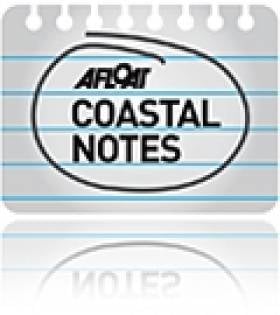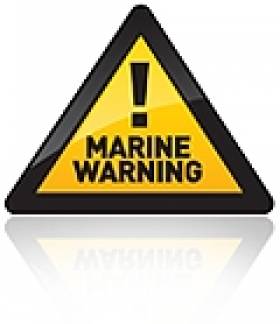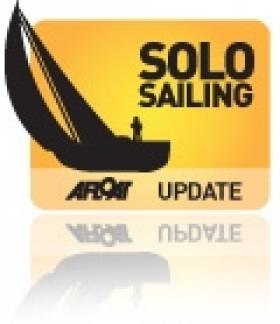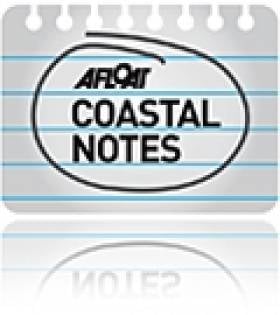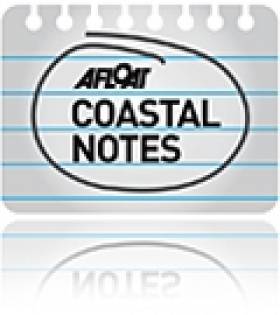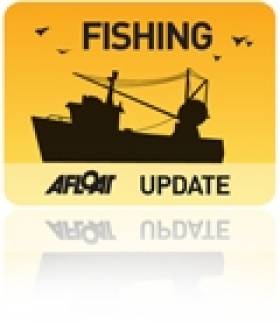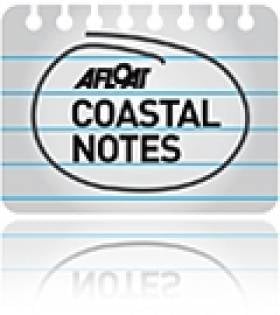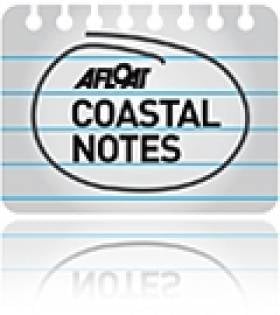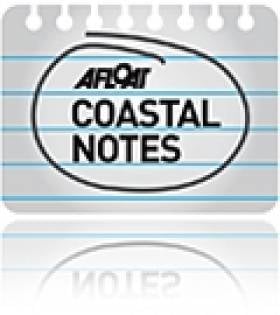Displaying items by tag: Celtic sea
Fastnet Awarded 'East Mizzen' Option In Celtic Sea
#Oil&Gas - Fastnet Oil & Gas has been awarded a new licensing option in the North Celtic Sea off the Cork coast.
The East Mizzen option covers a number of blocks in the Mizzen Basin, plus the western end of the North Celtic Sea Option, covering a tittle area of 1,155 sq km and contiguous with the previously awarded Mizzen option.
The 18-month option requires the reprocessing of a minimum of 400km of existing 2D seismic data, which has indicated the presence of light oil in some areas.
Fastnet managing director Paul Griffiths commented: "We are delighted to have added to our inventory of material prospective structures in the Mizzen area ... This has allowed us to capitalise on the interest being shown by the industry in our farm-out process in this particularly under-explored, yet highly prospective, basin.
"It has also allowed us to maximise the value of our on-going 3D seismic acquisition by creating 'running room' for potential farminees that have identified the Mizzen Basin as a new emerging shallow water exploration province offshore Ireland."
Earlier this year, as reported on Afloat.ie, Fastnet executed its exclusive option agreement to farm into its nearby Deep Kinsale Prospect, with plans to drill the prospect in 2014.
Marine Notice: 3D Seismic Surveys In Celtic Sea
#MarineNotice - Further to the recent notice of a 2D seismic survey in the Atlantic waters of the Irish continental shelf, Marine Notice No 14 of 2013 advises mariners of two full 3D seismic surveys in the Celtic Sea off the south coast.
CGG will be conducting the surveys on behalf of Fastnet Oil & Gas as part of its option on the Deep Kinsale Prospect, as previously reported on Afloat.ie.
The works are expected to commence in later this month and are expected to last around 50 days, subject to weather, beginning with the Deep Kinsale survey followed by the Mizen survey.
The seismic vessel SR/V Vantage (Call sign LMHY3) is scheduled to carry out the work. The vessel will be towing 10 cables, each 6km long with 100m separation for a total width of 900m, at a depth of seven metres. The vessel will also tow two source arrays, each made of three subarrays, each with a width of 16m and at a depth of six metres.
The seismic vessel will be accompanied by support vessel M/V Oms Resolution (Call sign HP5135) and chase vessel M/V Stormbas II (Call sign V4EM2).
In addition, as part of the Deep Kinsale survey, a second 3D seismic vessel M/V Artemis Angler (Call sign LAGU7) will assist in an undershoot of the Kinsale Alpha and Bravo platforms. The two 3D seismic vessels will sail in parallel at the same speed, one on each side of the platforms using streamers. The undershoot aspect of the acquisition is expected to last two to three days.
The seismic vessels will be restricted in their ability to manoeuvre whilst carrying out the surveys and all other vessels are requested to give these operations a wide berth. All project vessels will be listening on VHF Channel 16 throughout the project.
All vessels, particularly those engaged in fishing, are requested to give the SR/V Vantage, the M/V Artemis Angler and their towed equipment a wide berth and keep a sharp lookout in the relevant areas.
Full details of co-ordinates of the survey areas are included in Marine Notice No 14 of 2013, a PDF of which is available to read or download HERE.
New Solo Challenge Across The Celtic Sea
#Solo - Elaine Bunting writes on her Yachting World blog about this summer's Jester Baltimore Challenge, a spin-off of the solo transatlantic Jester Challenge for small boats.
The new event is much smaller in scale, with a route across the Celtic Sea from Plymouth (or Pwllheli in Wales) to Baltimore in West Cork starting on Sunday 16 June.
But that's intended with low cost of entry in mind - there are no fees to pay - to attract small boat sailors who've yet to test themselves in a solo challenge.
Yachting World has more on the story HERE.
Fastnet Oil Takes Option On 'Deep Kinsale Prospect'
#Oil - Fastnet Oil & Gas has executed its exclusive option agreement to farm into its Deep Kinsale Prospect beneath the Kinsale Head Gas Field.
The option agreement with Petronas subsidiary Kinsale Energy is confined to geological formations below 4,000 feet subsea. Fastnet will conduct a 3D seismic survey over 500 sq km in the Celtic Sea prospect by the end of the year as well as complete necessary geological and engineering studies.
The agreement also gives Fastnet an exclusive option to test the geologically similar Purbecko-Wealden reservoirs productive in Barryroe, a prospect that has proven a bounty for Providence Resources.
Fastnet chair Cathal Friel said: "We are delighted to have added an exclusive option to farm into and potentially drill the Deep Kinsale Prospect in 2014.
"It represents an attractive addition to our Irish portfolio as we have long held a belief that Deep Kinsale offers the potential to yield up another significant hydrocarbon discovery offshore Ireland. This belief has been further strengthened by the successful appraisal of Barryroe in 2012, which is geologically analogous to Deep Kinsale.
"We greatly look forward to working in close cooperation with our colleagues at Kinsale Energy, as we collectively seek to de-risk the prospect for drilling."
As previously reported on Afloat.ie, Fastnet Oil & Gas announced in December its plans to spend more than €20 million on the Celtic Sea's biggest ever seismic study on blocks off the south coast which were drilled in the 1980s and later abandoned.
New techniques in the oil industry are now allowing previously unviable resources to be extracted, as fellow prospectors Petrel Resources are planning to do off the Kerry coast.
Fastnet Oil Plans Celtic Sea's Biggest Seismic Survey
#OIL - Fastnet Oil & Gas will spend more than €20 million on the Celtic Sea's biggest ever seismic study, the Irish Independent reports.
The company was recently awarded two blocks in the waters south of Ireland which were drilled in the 1980s and subsequently abandoned.
But new techniques in the oil industry are allowing previously unviable resources to be extracted - as Petrel Resources are planning to do off the Kerry coast, following the discovery of enormous oil reserves in the Porcupine Basin.
And the Celtic Sea in particular has already attracted attention after Providence Resources announced its discovery of oil reserves at its Barryroe prospect potentially worth billions of euros.
Fastnet Oil, chaired by Cathal Friel, is currently in discussions with major oil groups with a view to sharing the costs of the seismic survey.
Unfishable Areas May Be Refuge for Endangered Flapper Skate
#FISHING - Marine scientists working in the Celtic Sea have discovered a natural refuge for the critically endangered flapper skate.
Many elasmobranchs (sharks, rays and skates) are highly vulnerable to over-fishing, but a new paper in the open access journal PLOS ONE shows that small areas of the seabed that experience below-average fishing intensity can sustain greater populations of these species.
The study reveals that one remarkable area in the northeastern Celtic Sea - where uneven seabed makes trawling difficult - supports at least ten species of elasmobranch, including the rare blue skate (Dipturus flossada) and related flapper skate (Dipturus intermedia).
Dipturus was previously considered to represent a single species (D. batis), but made the news in 2009 when a case of misidentification was revealed.
Both species are now listed as critically endangered but populations of the flapper skate, which can grow up to 2.5 metres in length, are considered to be under greatest threat from extinction.
European Union regulations mandate that fishermen throw back any flapper skate but its slow growth and reproduction mean that even very low levels of fishing mortality are now unsustainable for this species.
Scientists from Queen’s University Belfast, Bangor University and the Marine Institute carried out the study. Lead researcher Dr Samuel Shephard suggests that “the discovery of a Celtic Sea stronghold for flapper skate provides a remarkable opportunity to help save a species on the verge of extinction”.
Professor Michel Kaiser, chair in marine conservation at Bangor University, added: “Some have previously argued that areas of little interest to the fishing industry are not worthy of conservation, however this study clearly overturns that perception and highlights just how important some of these areas are."
Importantly, the fishing industry has reacted positively to the ‘win-win’ situation that an area of little commercial interest has potential as an important marine reserve.
Professor Dave Reid of the Marine Institute presented the information to industry leaders, and this has led to the inclusion of the area in proposed management plans for elasmobranchs in the Irish and Celtic Seas.
Eibhlín O’Sullivan, CEO of the Irish South & West Fishermen’s Organisation, responded that the Irish fishing industry "has been working with the Marine Institute for the past 18 months on developing a management plan for skates and rays. This new research adds valuable information for the identification of potential seasonally closed areas."
Prof Reid noted that “this is a great model for collaboration on conservation between the fishing industry and scientists”.
The research leading to these results has received funding from the European Community's Seventh Framework Programme (FP7/2007-2013).
Barryroe Oil Field May Hold Further Resources Says Study
#COASTAL NOTES - The Barryroe field off the south coast of Cork may deliver even more oil than previously anticipated, according to the latest surveys.
The Irish Times reports that Providence Resources has completed an evaluation of its Celtic Sea prospect which indicates that the Lower Wealden and Purbeckian areas could hold an "encouraging" yield of 778 million barrels.
The oil firm's tectnical director told the paper that the focus would remain on the Middle and Basal Wealden sands following its appraisal wells drilled over the spring and summer.
As previously reported on Afloat.ie, seismic data and results from six test wells on the Barryroe site led experts to estimate that the oil field contains as much as 1.6 billion barrels in total - four times as much as previous projections.
The oil flow is expected to be worth billions of euro to the Irish economy over a number of years.
The latest news "further reinforces the prospectivity of the area" according to Davy Stockbrokers, who added that "it also suggests that Barryroe will not be the only development of Purbeckian oil in the Celtic Sea".
#COASTAL NOTES - Providence Resourses has announced that its Barryroe oil field off the south coast may be as much as four times larger than anticipated, according to The Irish Times.
Afloat.ie previously reported on the Irish mineral exploration group's discovery in April this year, when the company confirmed the presence of light oil with an appraisal well at the site in the north Celic Sea.
Then on 15 March the firm announced that oil had begun to flow successfully from the Barryroe structure at a rate that could be worth billions of euro to the Irish economy.
The latest news suggests it could be worth even more over a longer period of time, as data compiled from six test wells on the site along with seismic data have led experts to estimate the field contains between 1 and 1.6 billion barrels of oil.
“It is clear that Barryroe is a substantial oil accumulation across multiple stacked horizons with much running room for further resource growth," said Providence chief executive Tony O'Reilly Jr.
The company also expects to begin explorations off Dalkey Island in Co Dublin by the end of the year, pending approval of its foreshore permit.
The so-called 'Dalkey Island prospect' has sparked much debate about its potential risks and benefits among the local community.
Oil Strike Success Off Cork Coast Could Be Worth Billions
#COASTAL NOTES - Providence Resources has struck big off the south coast of Cork with an oil flow that could be worth billions of euro to the beleaguered Irish economy.
According to the Guardian, the Dublin-based company announced yesterday that oil had started to flow successfully from its Barryroe structure in the north Celtic Sea at nearly twice the rate previously projected.
Providence Resources CEO Tony O'Reilly Jr said the discovery was a "seminal day for Ireland, especially in the runup to St Patrick's Day."
Last month the firm had confirmed the presence of light oil with its first appraisal well at the site, a situation described by its technical director as "extremely encouraging".
Now that a steady flow has been achieved, future extraction from the oil field - comparable to a medium-to-large North Sea field - can surely proceed, which now puts pressure on the Government to grand permission for further exploration around the Irish coast.
As previously reported on Afloat.ie, plans by Providence Rescources to prospect for oil on the east coast off Dalkey Island have been met with fierce opposition by mainland residents and environmental groups.
The Guardian has much more on the story HERE.
Fishing Industry Welcomes Selective Nets, Grant Aid at Irish Skipper Expo
#FISHING - Minister for the Marine Simon Coveney briefed the Irish Skipper Expo in Galway last weekend on a new initiative promoting the use of selective conservation fishing nets, which allow young fish to escape.
Under the initiative in the Celtic Sea, additional quotas of up to 25% will be made available by the minister to skippers of Irish fishing boats which use an escape panel in their nets, allowing young whiting and haddock to escape.
The escape panel, developed by the Irish industry, has been endorsed at EU level and is expected to be a mandatory requirement later in the year.
Minister Coveney said on Saturday: “The use of this panel will significantly reduce discards of juvenile whiting and haddock in the Celtic Sea, allowing juvenile fish to grow and mature and contribute to increased stock size and returns for fishermen in future years.
"I believe that this offers an example of a practical approach to dealing effectively with the discards problem and retention of a flexible quota allocation system that we should take forward in the context of the Common Fisheries Policy Review."
In other news, Bord Iascaigh Mhara (BIM) announced €1.5 million in grant aid for the Irish fishing industry at the expo.
A spokesperson for BIM confirmed to the Galway Independent that the funding will be available to industry through a variety of schemes including fleet safety, seafood environmental management, lobster V-notching and coastal action groups.
Over 100 companies displayed their products and services to fishermen at the Irish Skipper Expo International 2012, held at the Galway Bay Hotel on 24-25 February.
- Fishing
- commercial fishing
- Minister for the Marine
- Simon Coveney
- Irish Skipper Expo
- Skipper Expo International
- 2012
- Galway Bay Hotel
- Galway
- conservation
- selective
- quota
- Celtic sea
- initiative
- discards
- grant aid
- Bord Iascaigh Mhara
- BIM
- Funding
- Coastal
- Seafood
- whiting
- haddock
- juvenile fish
- Common Fisheries Policy


























